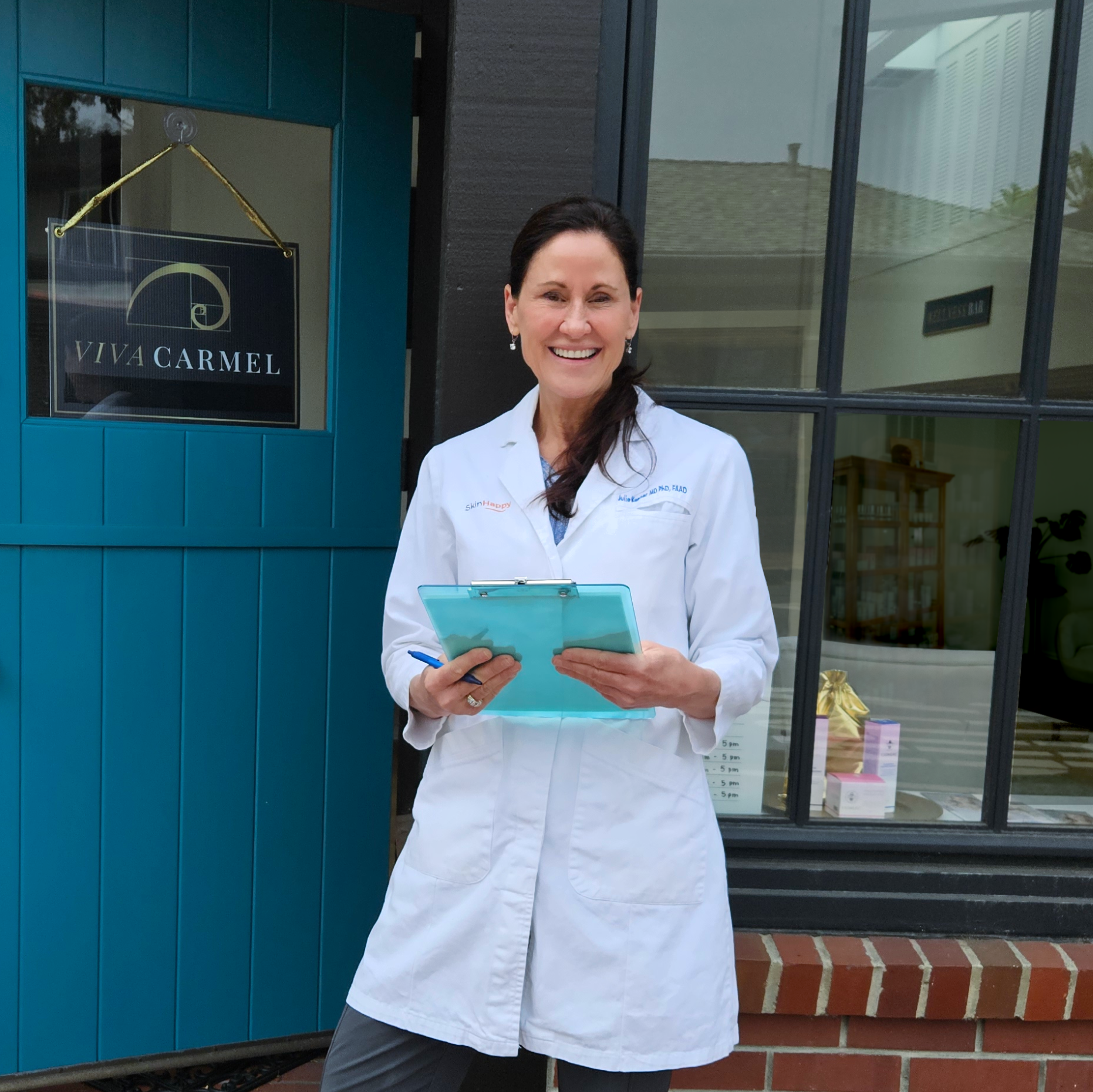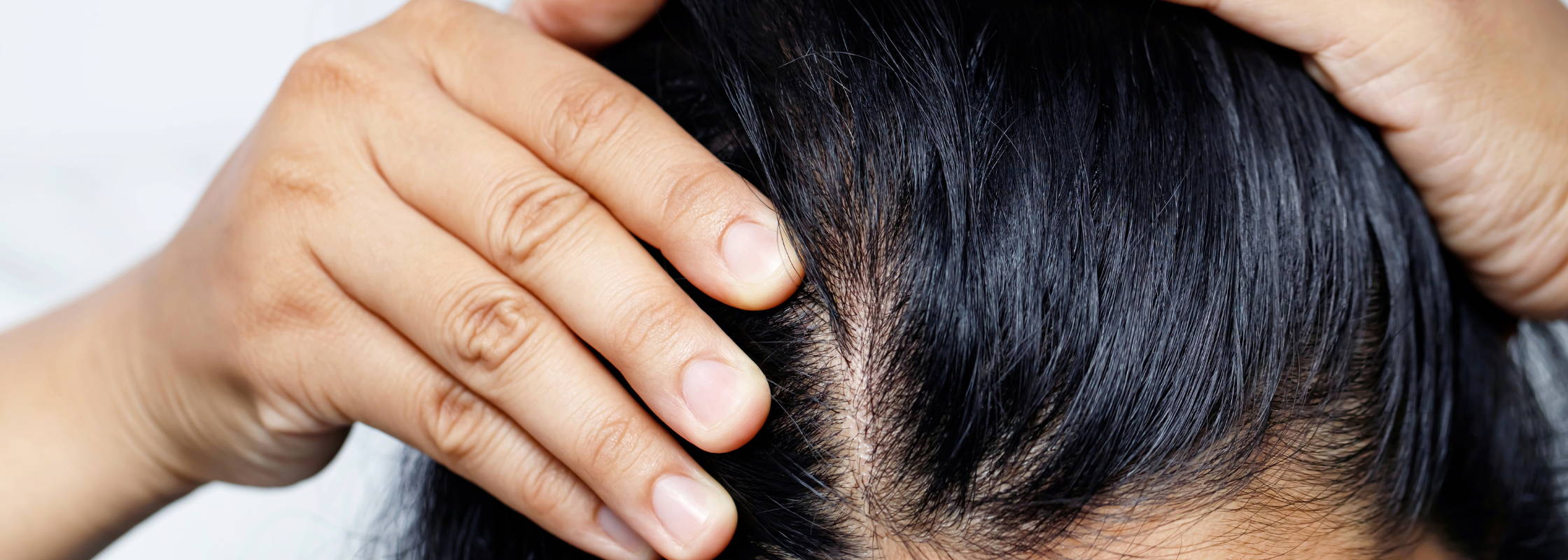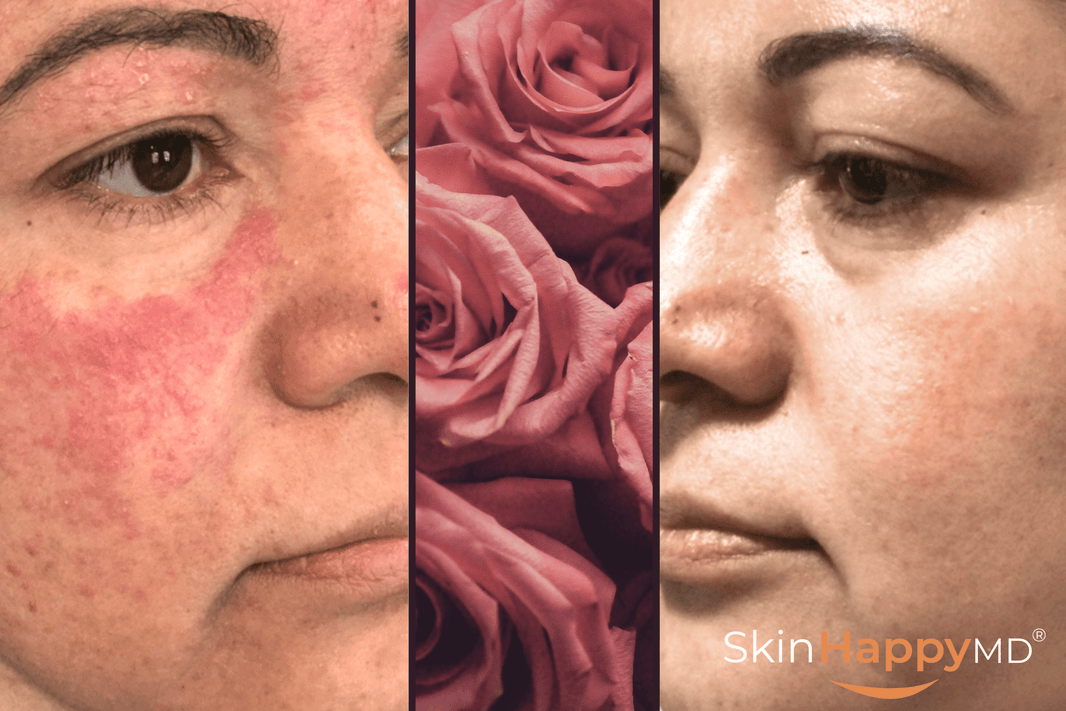What is Hair Loss?
All humans undergo hair loss to some degree with aging. This age-associated hair thinning is called androgenetic alopecia (AA), or male or female patterned hair loss (MPHL, FPHL). The biological process is not actually loss of hair, but rather is the transition, or more accurately, the miniaturization, of our thick long “terminal” hairs into tiny short “vellus” (“peach fuzz”) hairs. PHL starts early in life-shortly after puberty and proceeds relentlessly, in a genetically determined fashion. The inherited hair loss trait can range from mild to severe and is often depicted as a “hair loss curve” by dermatologists. Some lose very little hair, and so have a very shallow curve, and the hair thinning is not very noticeable. Others have a steep hair loss curve and show hair loss as early as their late teens.
What is the Difference Between Female Hair Loss and Male Pattern Balding?
Both men and women undergo patterned hair loss. Men often go completely bald on the tops and backs of their scalps. Women usually preserve their frontal hairline but experience hair loss more throughout the crown (top) of the scalp. The most significant loss is in the front part of the crown, just beyond the frontal hairline. While women can experience considerable hair thinning, with FPHL, they do not become completely bald. Hair loss can also occur in women's temples, though usually to a lesser degree than in men.
Other forms of treatable hair loss can occur simultaneously as PHL, making hair loss appear more severe. Other common causes of hair loss include Alopecia Areata (AA), and Telogen Effluvium (TE). We won’t go into these now, but both AA and TE can be treated and show different hair loss patterns, which can exaggerate the appearance of PHL. You need to have these conditions properly diagnosed and managed by a dermatologist.
Treating Hair Loss
Regarding PHL, the most effective treatments are compounded prescription solutions that experienced dermatologists can provide. Both men and women can benefit from a topical minoxidil solution, with better outcomes seen from prescription-strength minoxidil vs. the over-the-counter strengths (2-5%). Men can also benefit from oral or topical finasteride, whereas women can benefit from topical progesterone. Both sexes can benefit from topical retinoids; combination therapy is generally the best. Using the medications encourages the reversal of the miniaturization of hairs within the follicles from the vellus hair back to the terminal hair appearance. These treatments make the hair loss curve more shallow and slow the genetics of hair loss.
Hair regrowth is not an overnight sensation, and it is recommended that the medications are tried for a minimum of 6 months to determine effectiveness. While the clock cannot be completely turned back, most people respond to these topical medications and see great improvement in their hair loss. In addition to using prescription hair medications, it is essential to have a good diet containing protein, B vitamins (especially biotin), iron, zinc, and vitamins A and C.
While it is true that one needs to use topical medications daily to reap the benefits of the hair growth stimulation, this is not such a hard thing to do, and is how many other conditions, such as blood pressure, are managed chronically. If one stops the medication, the hair loss resumes at an earlier pace, with an initial shedding to adjust the curve back to the previous steeper state.
Newer therapies for hair loss are coming along all the time, so stay tuned for things to change in the future!
Psychological Side Effects of Hair Loss
Hair disease takes a tremendous toll on our self-esteem, often coming at critical or vulnerable times in our lives, and can leave lifelong insecurities affecting our relationships, work, finances, and more.
Losing one’s hair can also be stressful. In fact, hair loss is so profoundly distressing that those undergoing chemotherapy typically rate hair loss as their most dreaded complication! It is no wonder that PHL can take a negative toll on self-esteem in some people. People will sometimes notice variations in the pace of their hair loss due to PHL at different times of their lives. The incidence of hair loss increases greatly in women following menopause and may affect 75% of women older than 65 years.
The hair loss curve in a woman can be exaggerated around this time, which can be normal and may be a phenomenon of changing hormones that cause telogen effluvium as a co-condition. More often than not, there is a tipping point where people really start to notice their hair loss when they can see their scalp or their temporal hairline recede. Much like it just takes one more drop of water to fill a cup to overflow, it sometimes only takes a few more hairs to be lost for the person to notice hair thinning.
Final Thoughts
People with hair loss want better options!
At Skinhappy, we have specialty-crafted medical treatments tested on thousands of patients before you, and we are delighted to offer these better options through our online portal.
In addition to providing you with cutting-edge therapies you may not be able to access anywhere else, we also deeply understand the impact hair loss can have on self-esteem and “get” the need to stay motivated while waiting for hair to regrow. With our SkinHappy System, we treat your hair condition better and provide regular coaching and daily inspiration to help you along your journey to better hair health!








